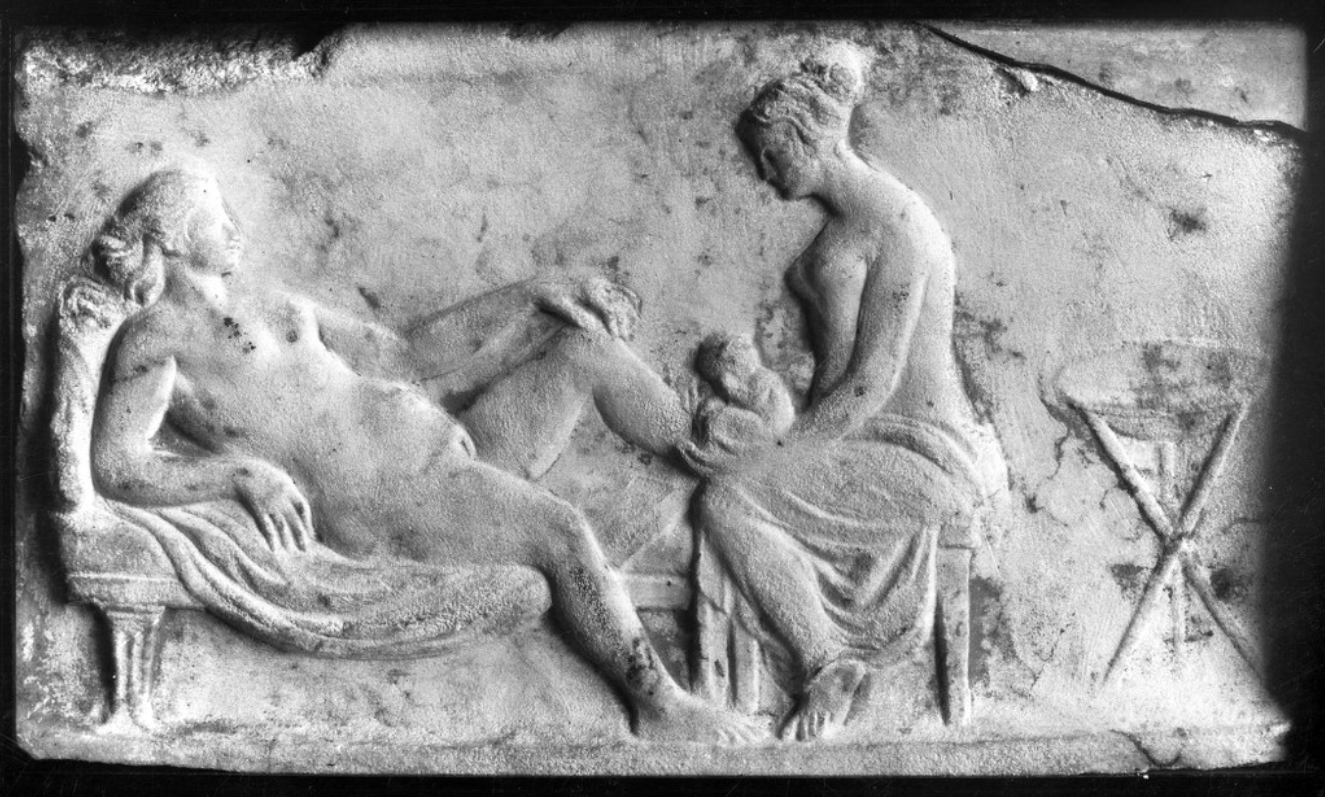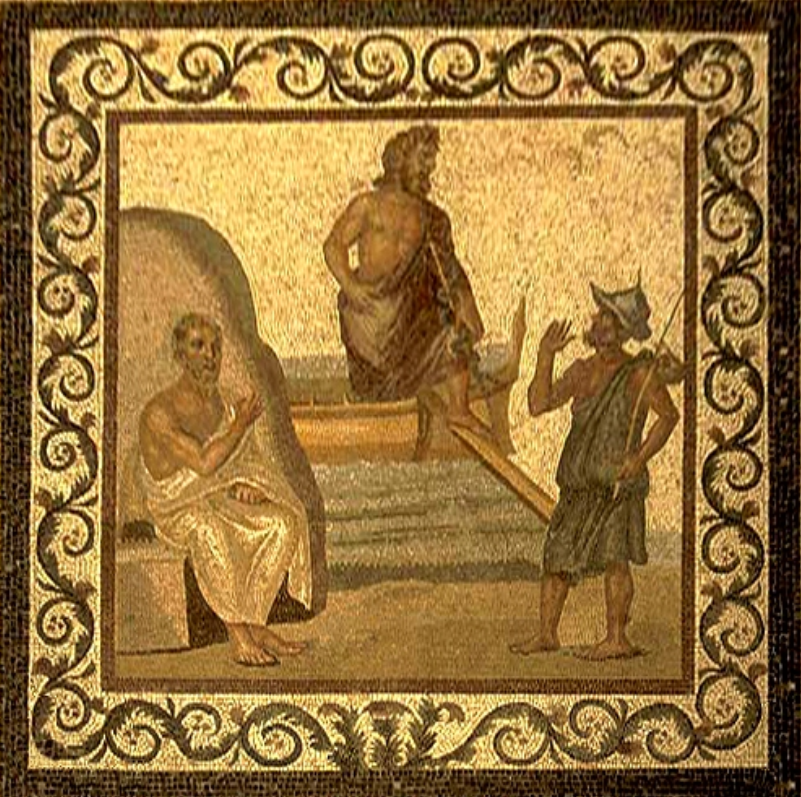Endometriosis & Gynaecological Health in the Ancient World
Ancient Roman relief carving of a midwife attending a woman giving birth. https://wellcomecollection.org/works/f54q45ya/items
The average modern-day diagnosis of endometriosis takes a perplexing ten years to yield any results. You’d be forgiven for thinking this lengthy and frustrating process is due to a lack of familiarity; that the condition is a fairly recent discovery in the medical world. However, delving into ancient medical texts from over 2500 years ago, most notably the Hippocratic Corpus, reveals a surprising awareness of associated gynaecological conditions and their potential causes. Despite frequent dismissal at the hands of modern medical professionals, the evidence suggests that women have been suffering these illnesses for thousands of years.
Evidence of Endometriosis in Antiquity
The term "endometriosis" finds its roots in ancient Greek, translating to "an abnormal condition of the uterus", although it wasn't officially coined until the 20th century. Despite this, within the Hippocratic writings, there are discernible traces indicating that physicians of antiquity possessed intricate knowledge of the signs and symptoms akin to what we now recognise as endometriosis, along with its associated afflictions.
For instance, the Hippocratic chapter “Aphorisms'' recounts observations of women experiencing "floodings'' (menstruation) followed by the passage of "grumulous clots'' accompanied by pain, inflammation of the uterus, and hysteric paroxysms. Similarly, in the chapter "Diseases of Young Girls", descriptions of menstruation tissue suddenly appearing abundantly in clots of black blood, resembling flesh, and sometimes leading to uterine ulcers, bear striking resemblance to endometriosis symptoms.
Moreover, the physicians delve into detailed descriptions of uterine adhesions and their association with local inflammation, as mentioned in "On the Nature of Women." They go on to explain that “in case of adhesions between the uterus and other parts, indurations, suppuration of the womb, and ulcers, sometimes arise, or discharges which prove fatal if not attended to; fomentations of urine are among the measures recommended. The usual effect of this state is said to be sterility”. These potential complications echo the challenges faced by modern endometriosis patients.
These textual excerpts from the Hippocratic Corpus provide compelling evidence that ancient physicians were likely among the first to document – and attempt to treat – encounters with endometriosis.
A mosaic of Hippocrates on the floor of the Asclepieion of Kos, with Asklepius in the middle, 2nd–3rd century
Understanding the Ancient Beliefs on Gynaecological Suffering
However, while ancient medical texts shed light on the recognition of endometriosis, they also reflect the prevailing societal beliefs, mythologies, and entrenched patriarchal norms, steeped in misogyny, which shaped perceptions of gynaecological suffering.
Ancient Greek society had a deep-rooted patriarchal structure, dictating strict roles and behaviours for women, influenced by divine and mythological exemplars like Penelope, whose fidelity and devotion to Odysseus were viewed as the ideal. Additionally, mythological narratives, such as Hesiod’s Theogony, reinforced patriarchal governance and restricted women to the sphere of childbearing and homemaking.
The Hippocratic Corpus mirrors these societal ideals, emphasising women's imperative role in childbirth and warning of dire consequences for those who deviate from this expectation. It propagates the belief that a woman's health is intrinsically tied to her ability to bear children, suggesting grim outcomes if she fails to do so.
For instance, it was postulated that a childless woman, even if otherwise healthy, would suffer bodily afflictions such as speech loss, teeth grinding, and pallor – a belief that reflects what we now know to be symptoms commonly associated with endometriosis-induced anaemia and pain-induced bruxism.
Moreover, the texts suggest a correlation between a woman's marital and childbearing status and her menstrual health. Young women are encouraged to marry and bear children swiftly to prevent suffering during menstruation – a notion seemingly rooted in fear mongering rather than medical understanding.
In “Girls”, young women are urged further to marry and have children, as it was suggested that if they did not, they would experience awful pain during menstruation - this being the most common sign of endometriosis. The suffering was allegedly due to the fact that if a woman had not had intercourse, her womb would be “closed up” and her menses would have trouble flowing out of her body, leaving the blood to fill up in the body, pressing into the heart causing it to become numb, which would cause the woman to become deranged.
This pressure to avoid these harrowing gynaecological issues extended to the point of the Hippocratics advocating for early marriage, even before the onset of menstruation, to ensure a woman's fertility and prevent the purported dire consequences of menstrual retention.
In essence, while the Hippocratic physicians demonstrate an awareness of endometriosis, their explanations of gynaecological suffering often intertwined medical observations with societal norms and the whims of men, reinforcing patriarchal expectations and attributing women's ailments to perceived moral failings which could be fixed only by obeying their ‘superiors’.
Unveiling Endometriosis Through Ancient Lenses
The insights gleaned from ancient medical texts offer a nuanced understanding of endometriosis in antiquity. While the Hippocratic Corpus provides evidence of early recognition of the condition, it also underscores the pervasive influence of patriarchal beliefs on medical discourse, shaping perceptions of women's health and attributing gynaecological suffering to moral shortcomings.
By contextualising historical perspectives, we can appreciate the enduring legacy of endometriosis and its impact on women's lives across different epochs, while also recognising the importance of challenging ingrained societal norms to foster more equitable approaches to healthcare.
Further reading
Dun EC, Kho KA, Morozov VV, Kearney S, Zurawin JL, Nezhat CH. Endometriosis in adolescents. JSLS. 2015 Apr-Jun;19(2):e2015.00019. doi: 10.4293/JSLS.2015.00019. PMID: 26005317; PMCID: PMC4432718.
About the author
Charlotte Horwood is 24 years old, and currently works as a copywriter. She has a BA in Latin and a strong interest in classics. Her main areas of interest are ancient medicine and gender & sexuality in the ancient world.



